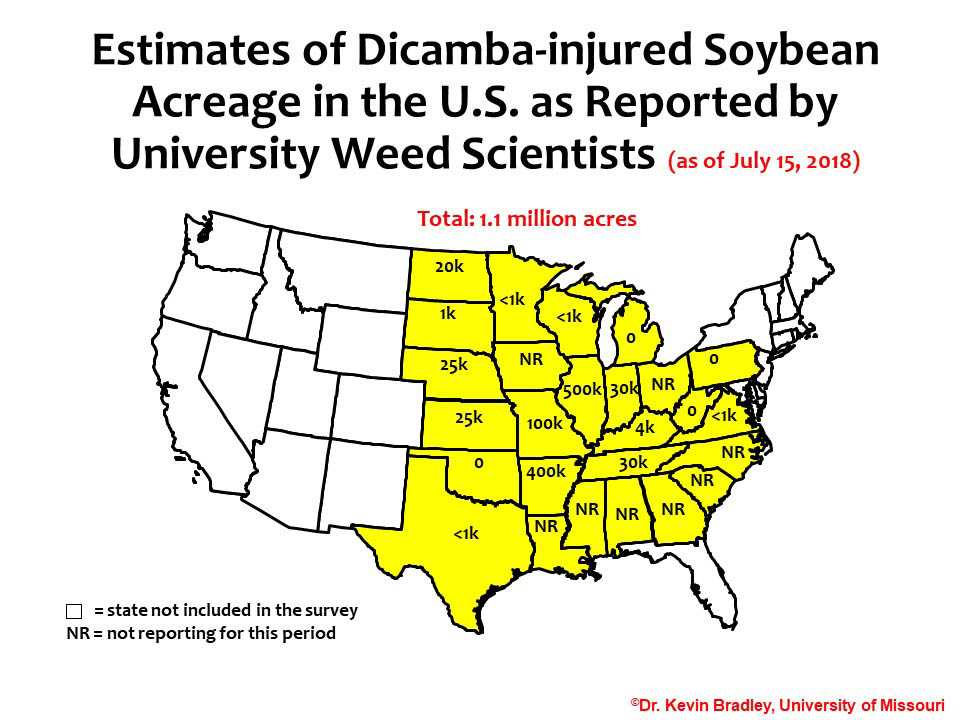Dicamba disaster year 3: states reporting record spray drift complaints

By Surya Zeeb
Published: August 4, 2018
Category: The Organic & Non-GMO Report Newsletter, Pesticide Hazards
Spray drift damage from dicamba herbicide sprayed on dicamba-tolerant genetically modified crops continues to mount across the United States. A University of Missouri report estimates that 1 million acres of soybeans have been damaged by dicamba as of mid-July. Drift complaints in Iowa and Indiana are even greater than last year while Illinois is reporting the worst damage in the U.S. Trees, vegetables and specialty crops are also showing signs of injury this year.
The dicamba drift damage problem, which has gotten increasingly worse over the past three years, has created deep divisions in the agriculture community pitting farmers against farmers, even leading to one farmer murdering another over a drift dispute. There is also tension between university weed scientists who are reporting the damage and agribusiness giant Monsanto, which continues to deny problems exist with its dicamba “technology.”
The company claims that sales of its “Xtend” dicamba- and glyphosate-tolerant GMO seeds more than doubled from 25 million acres last year to more than 50 million this year.
However, many farmers are planting Xtend seeds just to protect their farm from dicamba drift damage, a situation one farmer described as “tantamount to extortion.”
In Indiana, the state’s Office of the Indiana Chemist has received some 70 complaints about dicamba drift as of late June, up from about 40 complaints at the same time in 2017.
Iowa is reporting similar record numbers of spray drift complaints, according to Bob Hartzler, professor of agronomy and an extension weed specialist. As of July 2, the Iowa Department of Agriculture reports 121 drift complaints compared to 82 in 2017, a 50 percent increase. In Arkansas, Jeremy Ross, Arkansas soybean specialist, estimates about 400,000 acres damaged by dicamba drift.
Tom Burnham, a farmer in southeast Missouri and northeast Arkansas who estimates he suffered $60,000 to $100,000 in dicamba-related yield losses last year, told the St. Louis Post-Dispatch in mid-June that he began to see dicamba damage resurface on his soybeans.
“They’ve (Monsanto) got a terrible product problem. I don’t see any way that this can work,” said Burnham, who has been a vocal critic of dicamba. “The window (to spray) is so narrow that you can’t do it right.”
Sources: St. Louis Post-Dispatch, Delta Farm Press, WFYI Indianapolis, Iowa State University Extension and Outreach
To view full articles, visit:
http://www.deltafarmpress.com/soybeans/suspected-mid-south-dicamba-drift-cases-picking
https://www.wfyi.org/news/articles/despite-efforts-to-stop-drift-dicamba-complaints-up
https://crops.extension.iastate.edu/blog/bob-hartzler/herbicide-drift-2018-how-are-we-doing




